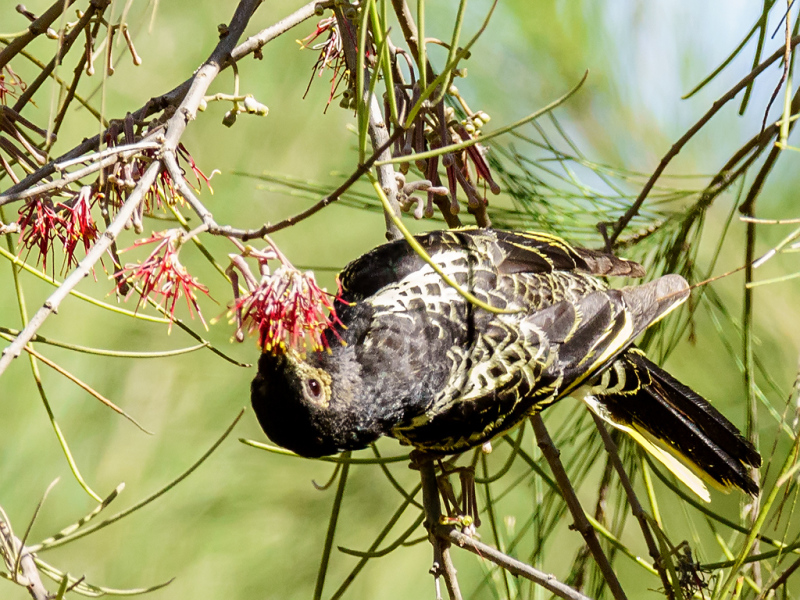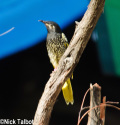�
�
Anthochaera (Anthochaera) phrygia
Regent Honeyeater
Kingdom
Animalia
Phylum
Chordata
Class
Aves
Order
Passeriformes
Family
Meliphagidae
Genus
Anthochaera
Species
Anthochaera (Anthochaera) phrygia
Status
critically endangered
Colours
Distinguishing features
Distinguishing features still need to be specified.
Size
- From 20 cm to 23 cm (Length of specimen)
Wingspan
- Wingspan data is not yet available.
Synonyms
Interesting facts
- The Regent Honeyeater exhibits unusual behaviour, in that particularly during Winter, isolated individuals of this species associate with and then often mimic the calls of wattlebirds and friarbirds. Although many birds use vocal copying behaviour, no other bird species is known to use vocal mimicry of close relatives in this way. (Wikipedia)
Distribution
Distribution and habitat preferences
The Regent Honeyeater was once common in Eucalypt forests of eastern Australia, especially along the inland slopes of the Great Dividing Range. It once could be found as far west as Adelaide, but is now gone from South Australia and western Victoria.
The population is now scattered, with the three main breeding areas being the Bundarra-Barabba area and Capertee Valley of New South Wales, and north-eastern Victoria. (Wikipedia)
Diet
It feeds on nectar and insects within eucalyptus forests. (Wikipedia)




